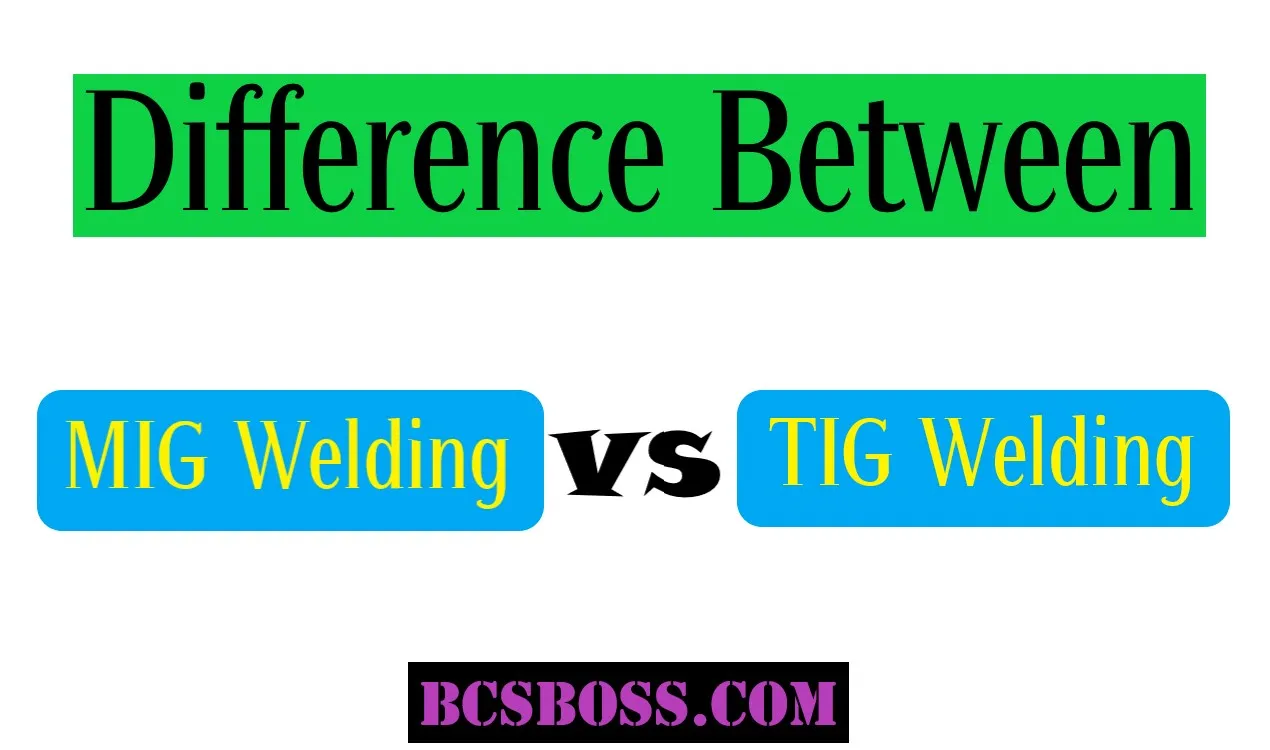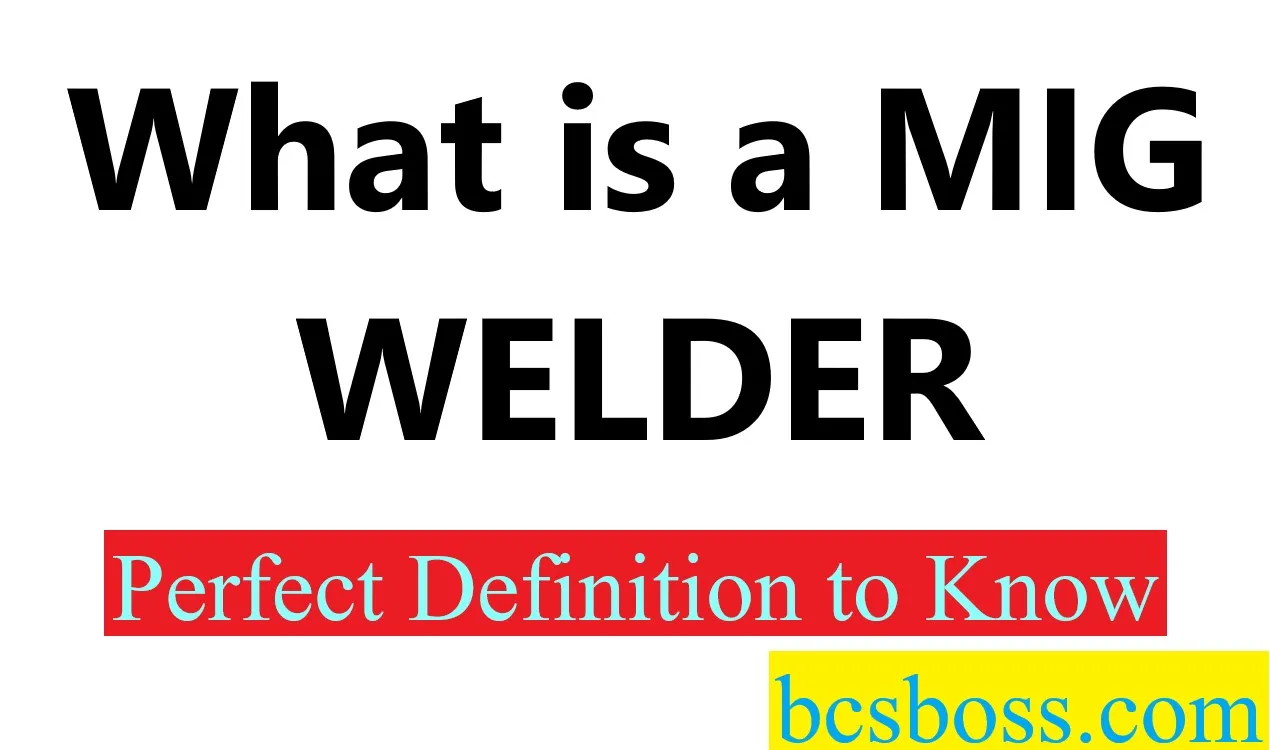Do you know the Trending Difference Between MIG Welding vs TIG Welding 2024? When a beginner desires to start welding as a profession a billion dollar question arises in his mind which method he should accept. Not only a beginner welder but also a client can ask the same question. Therefore, they start to dig deep to know more about this. A slight confusion is quite normal. After all, both procedures use electrical curves to produce joint metallic objects by heating it up.
In addition, both procedures use an inert gas combination to avoid erosion of welding conductor. Therefore, in this post, I’m going to answer this question in details with some vital information so that then any beginner doesn’t have to think twice to make his choice either MIG welding or TIG welding. In this post, I will be discussing Trending Difference Between MIG Welding vs TIG Welding.
Both have some sort of differences that make these two different from one another. Everybody knows that MIG and TIG welding equally use an electrical curve to process the weld. So were the differences? Actually, the difference starts with their technical name. Their technical names are Metal Inert Gas (MIG), and another is Tungsten Inert Gas (TIG). The main difference amongst MIG and TIG welding is the method of use. MIG uses a non stop feeding wire and TAG us extended welding rods and gradually feed them into the weld slick.

Trending Difference Between MIG Welding vs TIG Welding 2024
Difference Between MIG Welding vs TIG Welding
MIG Welding:
Learning MIG welding is very easy & simple. Generally, a MIG welder completes his works by using a non stop feeding coil of welding cable that burns, fluxes and fuses both the ignoble and main metals together. Metal Inert Gas welding, combines two pieces of metal together with a disposable wire attached to a conductor current. A cable passes through the welding gun at the exact time as the inert gas. The inert gas defends the conductor from impurities.
Notable Power Tools: Notable Power Tools for Advanced Wood Workers 2024
Frankly speaking, MIG welding is a recommended way for ease of use. The procedure tends to be a bit more merciful of errors than TIG welding. So it’s mostly recommended for all novice operators and non-professionals. You are able to weld at a variation of materials, for example, aluminum, minor steel & stainless steel. A variety of material wideness can be welded from thin measure sheet metal right up to weightier mechanical plates. Because MIG welding works with a disposable filler material to create welds, it is capable of completing thicker metal object’s welding in less time than the TIG weld.
There are mainly two procedures of MIG welding.
- Gas (GMAW) welding.
- Without Gas (Flux Core) welding
The Gas MIG (GMAW):
- MIG welding needs Argon/CO2 or raw CO2 for use as a shielding gas.
- Cable is cheaper.
- Less moveable
- Do clean welds with no scatter or slag.
- DCEP –Direct Current, Conductor Positive Polarization.
- Cable size minimum range 0.6mm = 0.023, which is great for thin metal.
- Much Difficult than Flux Core
3 Best Foosball Player in the World: Hidden about 3 Best Foosball Player in the World
MIG without Glasses(FCAW – Flux Cored Arc Welding):
- Don’t need any protecting gas, regulator and avoid the price of bottles.
- Cable is more costly.
- It is much handy, no gas for transportation.
- 4.Produce heavy smoke that makes it tough to see during welding.
- DCEN–Direct Current, Conductor Negative Polarization.
- Tiniest cable accessible is 0.8mm= 0.030″, which is not easy to use on any thin metal or material.
- It has profound infiltration than gas MIG.
- For using flux core to safeguard weld, it causes scatter slag, which must need to be cleaned every time.
- The Easiest way for positional welds (vertical overhead).
The cable is fed via a reel of cable feeder to the gun. MIG is the coolest way to learn, but it needs gas and a cable feeder so it is not as transportable. MIG is a great way to weld thin metal, particularly for auto bodywork.
Top 10 Cheap Foosball Table Reviews: Best Ever Top 10 Cheap Foosball Table Reviews | Wonderful Guide for You
TIG Welding:
TIG Welding, also well known as Tungsten Inert Gas welding, which uses in-expendables tungsten, along with an inert gas, to weld two work parts together. The tungsten conductor delivers the power, but not the filler, for the welding procedure. Although it can use filler, it occasionally generates a weld where one part melts into another one.
Items that are made with this procedure are things like galley basins and toolboxes. The major advantage is that you can get your power down low and not blow over the metal. Pipe welding and other weightier tasks can also be executed; you need to consume a unit that is proficient hitting out the quantity of power that you require. The main difference between MIG and TIG welding is that one method uses a continuously feeding conductor and is a very fast way of putting down welds.
TIG Welder Reviews 2024: Ultimate TIG Welder Reviews 2024 | The Ultimate Buying Guide for Buyers
Another way is a much more fine and gentle welding method. TIG has the handiest device. TIG welders can weld various types of metals. The weakness is that it needs much more time than MIG weld. For anyone who desires to do some welding at home, so his best choice of device to purchase would have to be the cable feeding MIG welder. TIG – Tungsten Inert Gas, welding uses a non-consumable tungsten conductor to run a current over the metals to join and maybe or maybe not use a filler metal. Deprived of a filler material, TIG welding requires getting the parts of metal being welded hot plenty to form and bond with each other.
Naturally, this is much easier with thinner parts of metal than with heavier ones. TIG welding needs a very strict control over the electric current used in the weld, pressure, and timing. In maximum cases, using an automated, computer numerically controlled (CNC) welding machine for TIG welding provides the best result. Auto gears can dependably execute identical welds repeatedly than a manual welder could.
So which One is much preferable MIG Welding vs TIG Welding?
Actually, the answer lies beyond the requirements of the job between MIG Welding vs TIG Welding. As noticed before, MIG welding is naturally better for any durable welding work for thicker larger pieces of metal joining as it uses filler material. Although, TIG welding be able to work miracles for joining smaller pieces of metal, such as the cables for a custom steel cable carrier.
In addition, the TIG technique straight joins two parts of metal; as a result, there is no filler material to flunk. By using mechanical welding gear, TIG welding can be a little bit lower-maintenance, since the welding conductor isn’t constantly consumed by the welding procedure. However, the welding conductor still needs to be appropriately polished and washed with uses, particularly while welding stainless steel.
Conclusion:
For thick, durable welds, between MIG Welding vs TIG Welding, MIG welding is the best choice. For thinner parts of metal, TIG welding is the best option to choose for a result that is more effective. While using an automatic welder (No matter it’s MIG or TIG), it’s much essential to get the weld settings and panels just right—or else, you will do the same mistake over and over it could cause a bad output. In brief, welding solution as the most suited should be select on a case basis.






